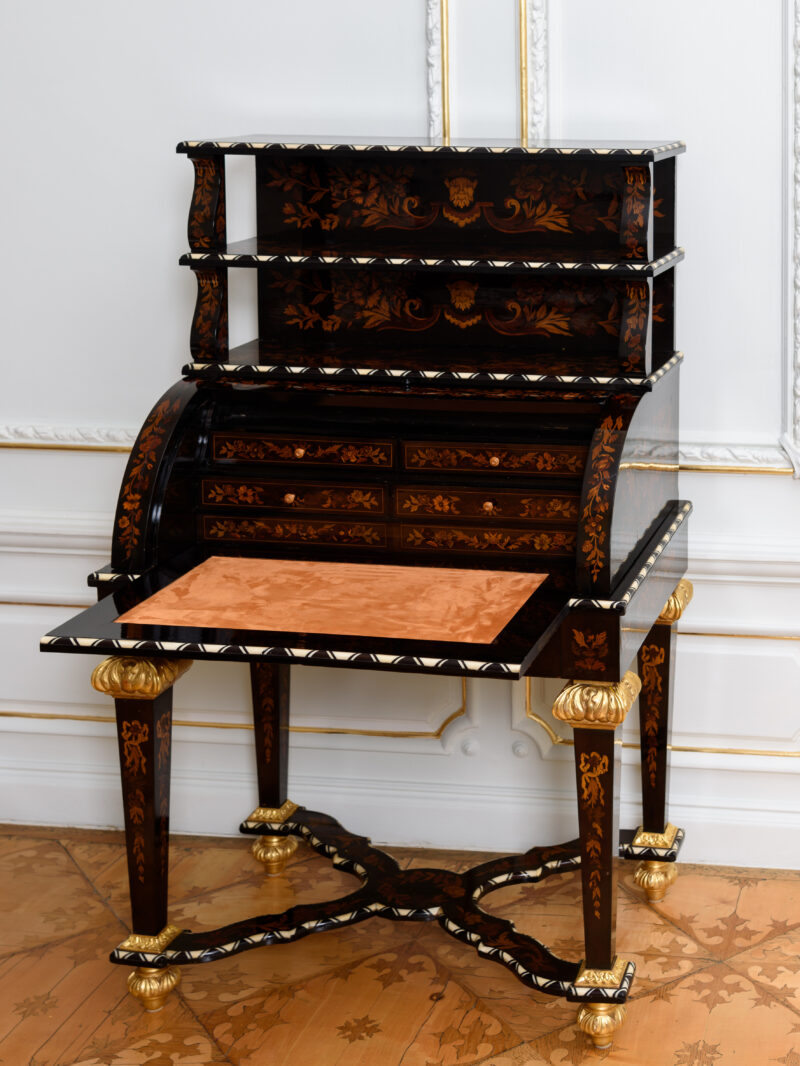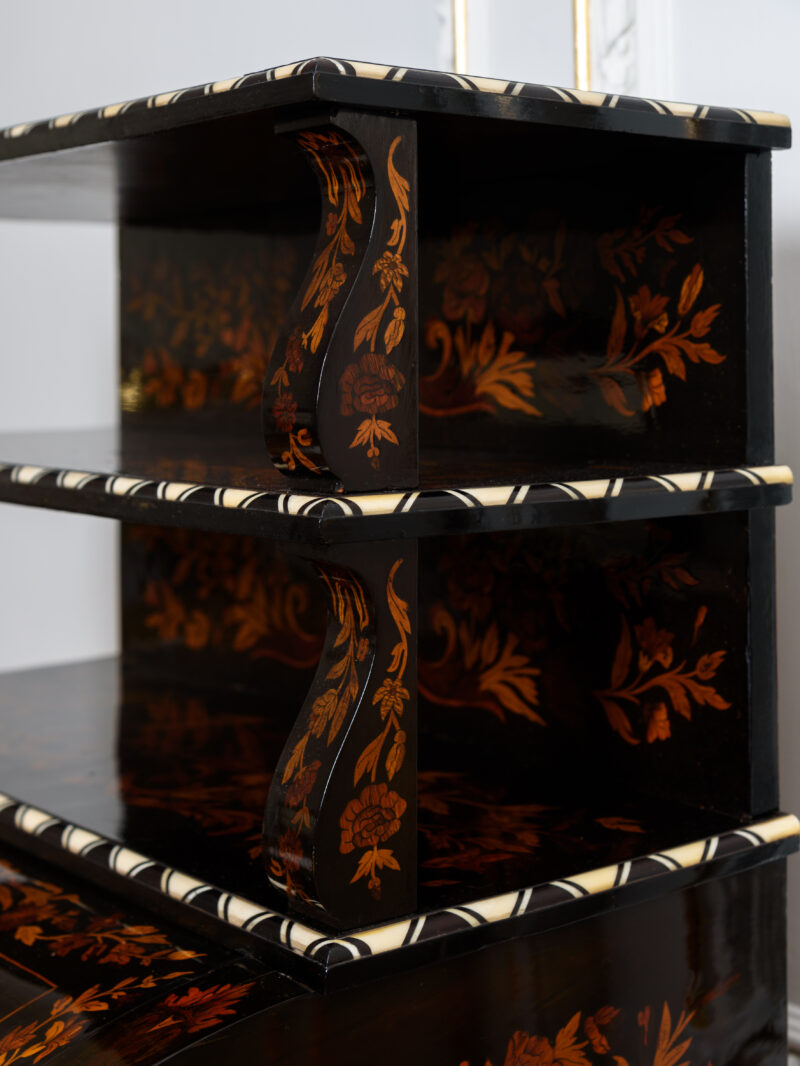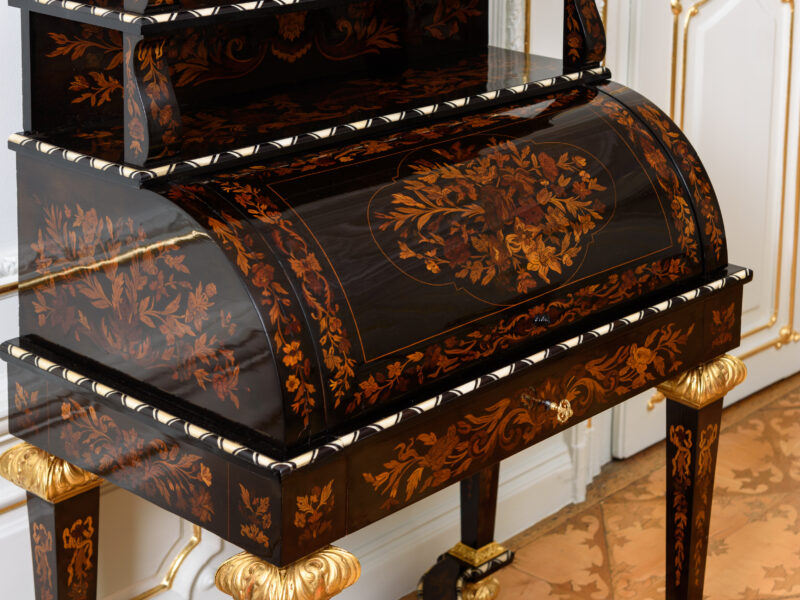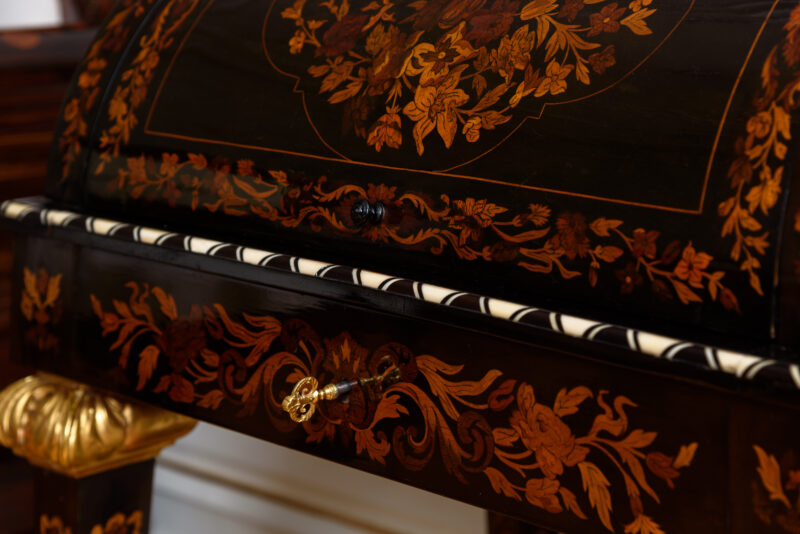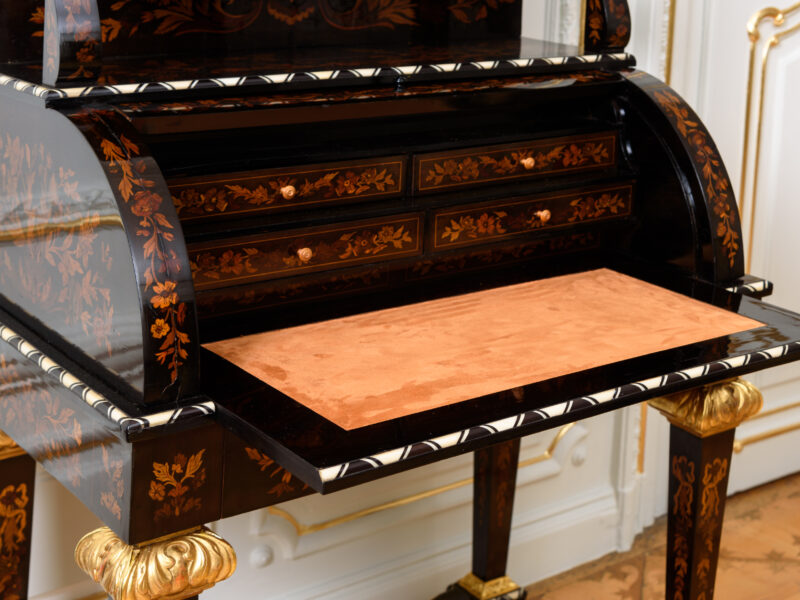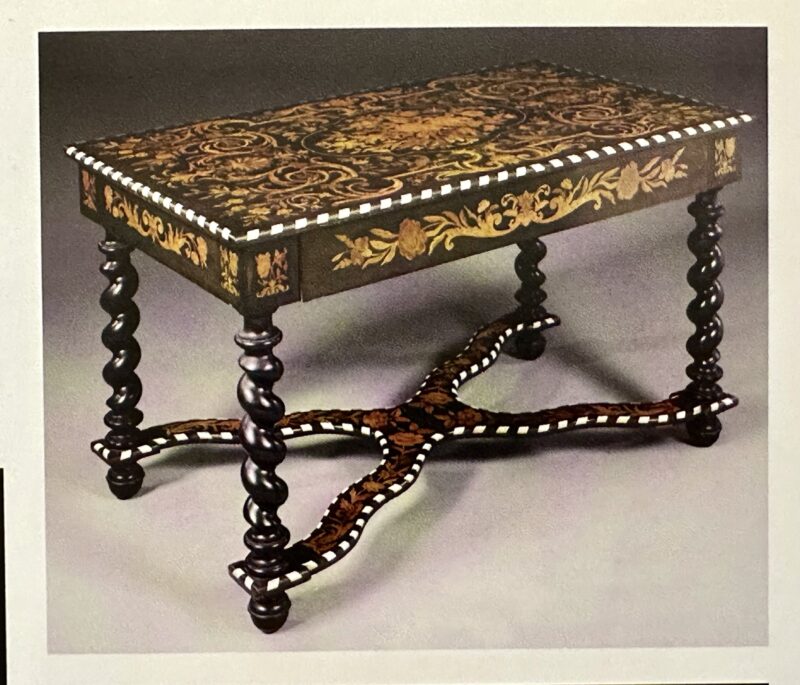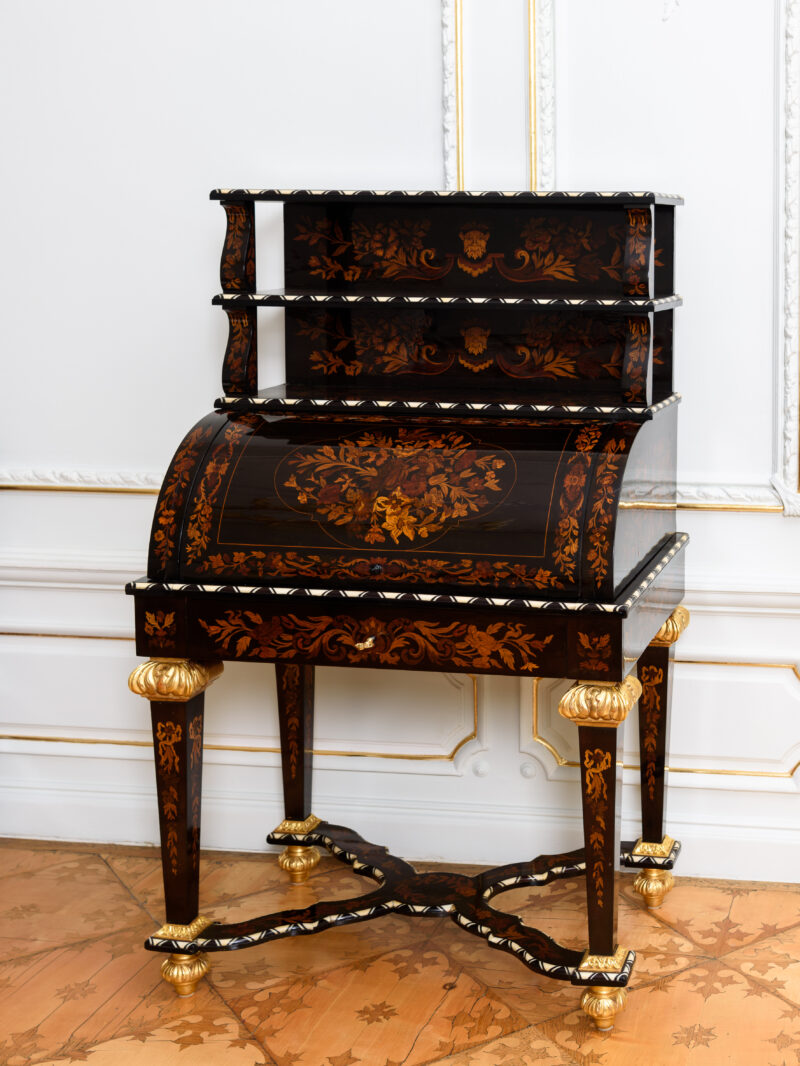
Fine, Dutch Cylinder Desk
An extraordinary “Cylinder Bureau”, elaborately executed in the style of the second half of the 17th century.
The small desk captivates with its extremely fine marquetry in the form of leaves and flowers, which are executed in a wide variety of exotic woods, as well as the ornamentation in ivory and ebony on oak.
The four conically shaped legs, each centered by a ribbon, are inlaid with leaves and flowers all around. The feet and upper part of the legs are each embellished with real gold-leaf ornaments. The multiple curved cross joint comes with rich marquetry, executed in ivory and ebony decoration at the edges.
Above the feet is a frieze with marquetry all around and a main drawer with a lock and a finely chiseled key. The top has a beautifully marquetry medallion in the middle, surrounded by thread inlays and a leaf and garland frieze, which conceals two small compartments and four drawers.
The writing surface comes with an Alcantara cover. The two side walls of the writing compartment are each decorated with large leaves and flowers. Above the writing compartment we find two compartments with rich intarsia and surrounding ivory decoration.
The back walls of the compartments have each a mascaron in the middle, smiling at you in a friendly manner when sitting at the desk.
It is an exceptional piece of furniture, masterfully inlaid, which, as Christopher Payne states in his book, is aligned with the furniture of the 17th and 18th centuries in terms of design and quality.
Literature:
We find a comparable elaborately executed table in Christopher Payne “European Furniture of the 19th Century, Flanders Table” p. 498 fig. 1 and 509 fig. 2
Where he explains:
“Based on the Antwerp style of the late seventeenth century, there must have been considerable trade between the Dutch ports and London traders from the 1830s onwards. Similar tables can be seen in the great houses of England and Scotland, some branded “EHB”, the initials of London antique dealer Edward Holmes Baldock. 301⁄4 high; 51/ wide; 30h deep; (77 × 131.5 × 77.5cm) c. 1840
Antwerp furniture makers and marquetry workers gained an enviable reputation for their intricate cabinets inlaid with tortoise shell with red foil backing to enhance the color of the shell. In the late sixteenth and early seventeenth centuries their influence was widespread throughout Europe, particularly in Italy, and many Flemish migrant workers applied their art to northern Italy and southern Germany, mixing styles somewhat and thus blurring the exact provenance of many pieces. This mix of styles became even more intense in the eclectic nineteenth century. One of the most prominent of these migrant workers was Leonardo Van der Vinne from Antwerp, who worked in Florence in the late 17th century. Its simple inlaid foliage is often repeated in the ebonized inlays from Milan in the second half of the nineteenth century. Certain Spanish pieces can be found with ivory and ebony banding, similar to the mirror below, which was probably brought to Antwerp by the Spanish, who acquired the technique from their Moorish conquerors and brought certain aspects of the Mudéjar style to northern Europe. These pieces reflect the style of the late seventeenth century but are nineteenth-century copies.”
